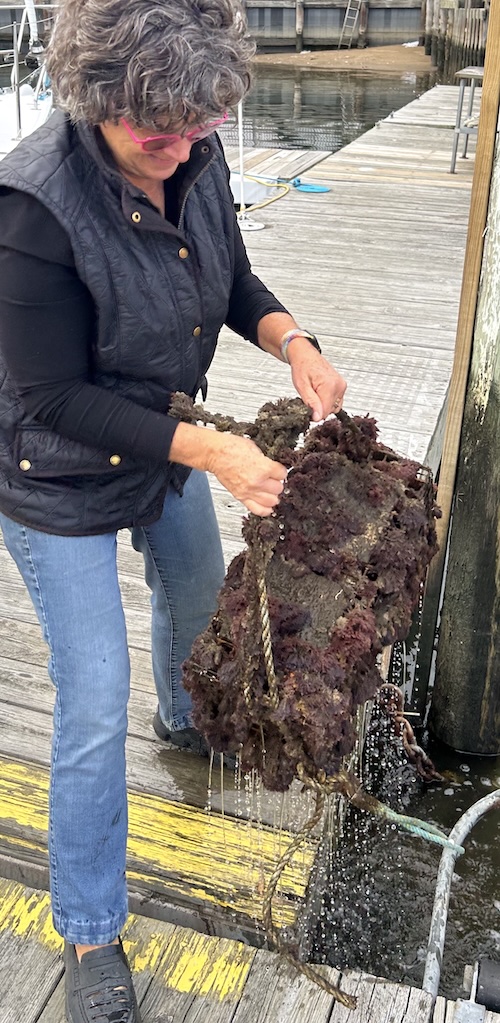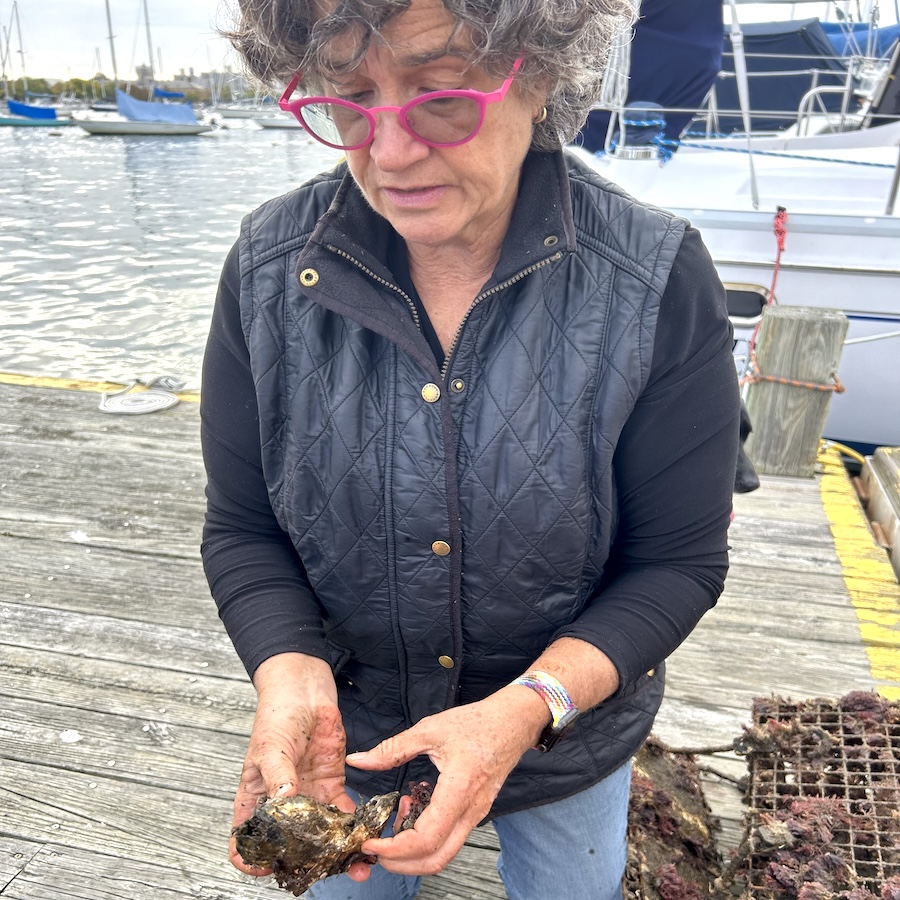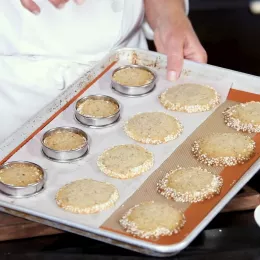Institute of Culinary Education Chef Kathryn Gordon is volunteering with a non-profit organization to bring oysters back to New York harbor.
Even though ICE Pastry & Baking Arts and Restaurant & Culinary Management Instructor Kathryn Gordon absolutely loves eating raw oysters, lately she's been keeping them off of her plate and in New York harbor.
Chef Kathryn is volunteering directly with Billion Oyster Project, a non-profit organization leading a movement to restore oysters to New York's waterways. There, she is a trained community scientist helping to monitor oyster populations in the harbor.
Oysters are particularly effective filter feeders. They remove algae, organic matter and excess nutrients from bodies of water. Because of this, oyster reefs are being installed up and down New York Bay, the Hudson River and the East River to help clean the New York harbor as a whole.
The best part about the Billion Oyster Project's mission is that the organization actually encourages New Yorkers to eat oysters in local restaurants. They collect the used shells, clean them, let them cure for over a year at a curing site and then re-use them for new oyster growth. This reusability also translates into good kitchen habits: in the Culinary Arts curriculum, ICE Chef-Instructors teach students how to carefully open oyster shells, making sure to leave as much of the shell intact as possible without splintering it.

According to the Billion Oyster Project, it's estimated that New York's waterways were one of the world’s largest oyster habitats in early America, with approximately half the world’s oyster population living there. Oysters were so abundant that they were once a ubiquitous street food. But fishing, overconsumption, sewage from newly-developed settlements and industrial pollution took their toll.
Related: A Deep Dive Into Oysters
The Billion Oyster Project started 10 years ago to, as you may have guessed, reintroduce oysters to the ecosystem they once called home. The long-term goal is to restore one billion oysters to the harbor by 2035.
In order to do so, the organization has many restorative efforts underway, including collecting recycled oyster shells from restaurants, rebuilding oyster reef systems and setting 50 million oysters in local waterways each season. Their network is vast and includes approximately 15,000 volunteers, 100 New York City schools, 8,000 students and over 75 restaurants.
As a volunteer, Chef Kathryn monitors two tanks placed by Billion Oyster Project scientists in Sheepshead Bay. The oysters in the tanks help clean the southern Brooklyn coastal region. Oyster spats, which are stabilized oyster larvae that have attached to a surface, were inoculated onto previously-recycled oyster shells and brought to Sheepshead Bay in April 2024. In the first count one month later, they had grown to about 5 millimeters. At the most recent count, those same oysters are almost 65 millimeters, just about seven months into the total growing process.

If you don’t mind a bit of mud and are interested in working with Chef Kathryn on the monthly count and measurement, reach out to her on social media at @chef_kathryn_gordon. If oysters aren't your thing, there is also need for volunteers to document a range of other aquatic life such as blackfish, suckerfish, crabs, blood worms, oyster drills, barnacles, and mussels in the bay.
Also, if you're a current ICE student or graduate and like eating oysters, join Chef Kathryn’s friend, the Canadian shellfish educator and ambassador Michael-Ann Rowe, for an educational oyster lesson with a master shucker on November 22 at ICE New York!
Reserve your spot: Canadian Oyster Festival with Shucker Paddy




